SOUTH AFRICA'S NO. 1 TOURIST ATTRACTION
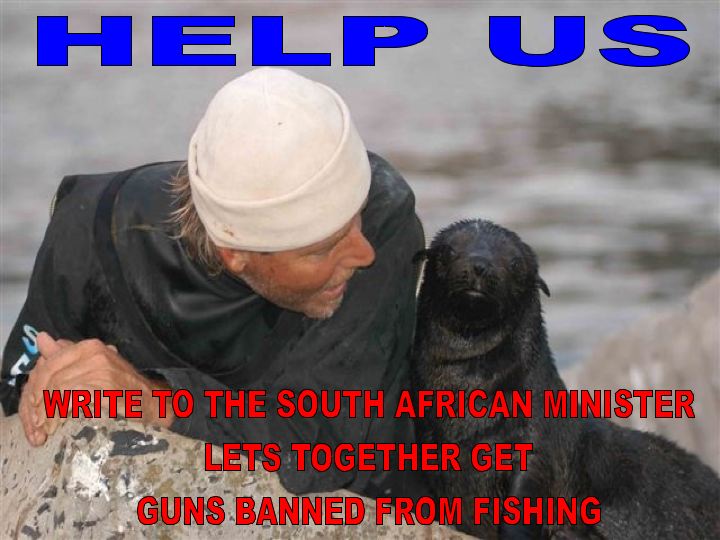
Dear All Cape Fur Seal Partners,
Below is the issues surrounding the entanglement and suffering of seals in one harbour in South Africa. As I have decided to attempt to address this, I have decide to dedicate this work to Team Kelowna of Bruce Foerster and Sinikka Crosland. I hope this is acceptable to them. Please if possible, paste to some or all of the list below, your comments. I believe personal thoughts and comments carry more weight than "sample letters"
For the Seals
Francois Hugo Seal Alert-SA
PS - Still no sign of MAX.
----- Original Message -----
From: SealAlert-SA
To: mwillemse@deat.gov.za ; jyeld@incape.co.za ; eve@africageographic.com ; lyntinaa@incape.co.za ; clenders@deat.gov.za ; stoffelf@pprotect.org ; garyp@pprotect.org ; LawrenceM@pprotect.pwv.gov.za ; verne@nelsonmandela.org ; akathrada@anc.org.za ; jbell@ifaw.org ; dnel@wwf.org.za ; nrockman@pgwc.gov.za ; president@iucn.org ; achim.steiner@iucn.org
Sent: Wednesday, April 12, 2006 1:46 PM
Subject: SA's no. 1 Tourist Attraction - Cape Fur Seal Nightmare
South Africa's No.1 Tourist Attraction - Cape Fur Seal Nightmare
In 2001, 19.4 million people poured through the V&A Waterfront in Cape Town, South Africa. 42% of these tourists. Making this South Africa's No.1 tourist attraction. Symbolised throughout the waterfront from leading 5-star Hotels to moving advertisements on packaging trucks, seals are prominently displayed.
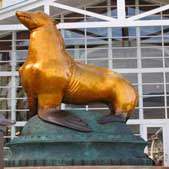
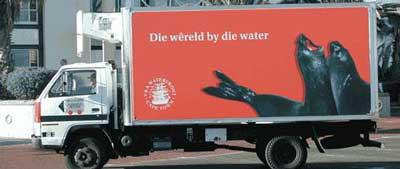
From the website of sa-venues.com. "Seal Landing - It is unusual to get a close view of seals, as offshore islands are their preferred breeding grounds. A Colony of Cape Fur Seals are however a familiar sight resting on the seal landing. They are an integral part of harbour life and Capetonians are fortunate enough to have these seals living in such close proximity". Named after the first democratically elected President, tourists embark from the Nelson Mandela Gateway ferry terminal to Robben (Seal) Island, where the R150 per person paying visitor can expect to see. Seabirds, African penguins, ostriches and bontebok as some of the wildlife on the island - but, no seals. An island which is the largest in southern Africa, a marine wildlife sanctuary, a UNESCO world heritage site, but has remained extinct and banned to protected Seals for over 200 years.
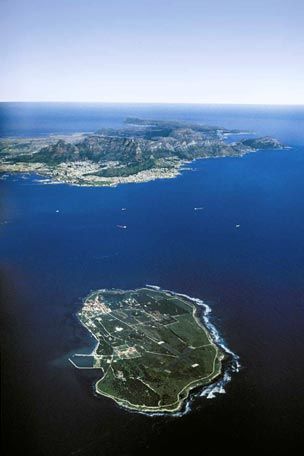
One of the very first visitors to our shores and this island, had a slightly different view. In 1604, Sir Henry Middleton wrote, our boats were sent to the island (Robben-Seal) island; where we found such infinite number of seals that it was admirable to behold. All the seashore lies overspread with them. .
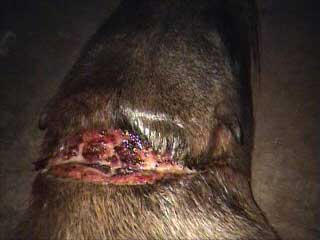
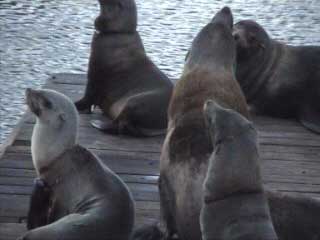
whilst they await the arrival of tourists from around the world each day
Today the only sight 19.4 million visitors can expect to see, is the sight of over 250 protected Cape Fur Seals living in the polluted V&A waterfront, with multiply entanglements, injures and abuse - the "pride" of SA's No.1 tourist spot.
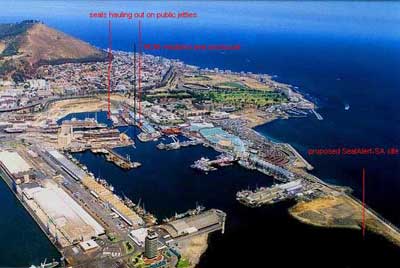
The two red lines point to the 3 public jetties were seal prefer to haul-out.
The far right red line, points to the proposed Seal Alert-SA Seal Disentanglement Site
Last year, MCM's Seal-Team reached their 1000th seal freed at the V&A Waterfront since starting in 1990. In one documented incident a seal had been found to have been entangled 27-times. A Number not previously heard of anywhere in the world. In order to address this clear abuse of these protected seals. MCM has been freeing entangled seals, primarily from one enclosure within the entire Table Bay Harbour complex, during daily morning visits. In 2003, MCM spent over R300 000 constructing a glass-walled tourist viewing/disentanglement enclosure. At the time, Seal Alert-SA through the Public Protectors Office raised objections - citing this was wasteful public expenditure as the facility was inappropriately positioned. Naturally, once again all our recommendations and concerns were ignored.
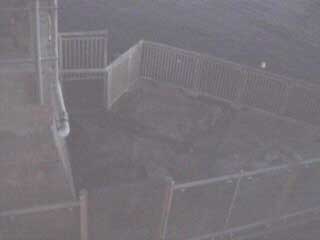
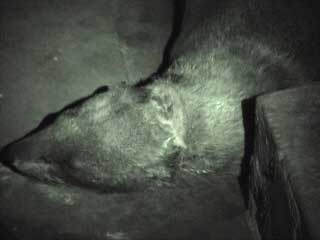
The pictures of entangled seals contained in this report, were all taken on the morning of the 11th April 2006 and within 1-hour period, between 6 - 7 am. Seal Alert-SA recorded the following;
Less than 7 seals were found within the R300 000 MCM Seal Enclosure, three of which had previous entanglement scaring and were tagged.
Over a dozen seals were observed with multiple entanglements in this single hour, hauled out on at least three other jetties, used by tourist to embark on various harbour rides.
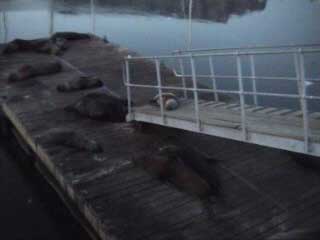
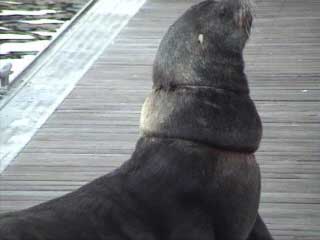
With considerable experience in this field of Seal Disentanglement - Seal Alert-SA, attempted to free these seals hauled out away from the MCM enclosure. I found the following;
Daily arrival of tour-boat staff, involving constant human harassment daily, has left entangled and abused seals terrified. The result seals only use said jetties during night-time, departing at first light when the human activity increases.
It is a natural reflex behaviour for an entangled seal to feel particularly vulnerable, this causes it to naturally shy away from more robust healthy seal colonies offshore. Unable to effectively hunt in the wild, these seals are drawn to "easy sources of food", i.e. that dumped in Harbours by fishermen. Compounding their condition as often this "fish offal" is rotten, and not conducive for digestion.
In essence, both from the unnatural entanglement and the human "shoo-ing" effects, we are forcing upon these wild seals a behavioural change.
As things currently stand, it is next to impossible, attempting to either free or capture these seals not found within MCM's seal enclosure. As evident, by their deep wounds and long progressing, multiple entangled, except in the rarest of instances. Attempting to approach a seal to within 50 metres is an impossibility.
The more seals entangled, are forced to swim around the polluted harbour, (due to this jetty disturbance and avoidance of the MCM capture enclosure), the more likely they are to be re-entangled. Their suffering is severe, with one case observed the emancipated seal appearing very weak.
It is our view from years of observation, that the reason seals frequent a harbour environment is not initially the attraction of an "easy meal", but instead an underlining cause of injury, entanglement or starvation, that has caused this seal to abandon its offshore colony. Although not in every case, but in most, should these seals find a source of food within the harbour and not die. Out of pure survival, they are forced to alter their natural behaviour, so in fact we are changing their behaviour unnaturally. To that of a harbour seal species. Our concern, is that in the majority of cases, no secondary rehabilitation or rescue, is rendered after the disentanglement. This in effect therefore, does not address the underlying problem, the reason the seal became entangled in the first place, hence why one seal was reported entangled 27-times.
With an estimated over 250 seals living permanently in the harbour, somebody or some-one is dumping a huge quantity of food illegally. Annually we have calculated upwards of over 450 tons, is dumped. In order to support said seal colony.
Seal Alert-SA and Seashepherd International has previously put forward a proposal to effectively address this. Todate, this proposal remains ignored and unanswered. It is apparent that MCM, considers that they are the only experts and frown on any public involvement. Further confirmed in both the IFAW Seal Workshop in 2003 and the written comments made by Seal Alert-SA to the new Seal Protection Draft policy, which were considered of "no concern".
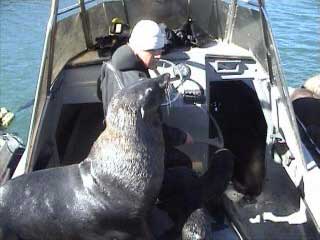
This is no more evident, with MCM refusing to issue any permits to free seals, refusing to grant access to the waterfront and require permits to not only enter the water but as well to record and film these entanglements of seals. On the morning in question, an attempt was made by Waterfront Security Staff to prevent the freeing of a severely entangled seal.
Our proposal is simply. Construct a floating facility, of sufficient size for the number of seals within the harbour (at the spot highlighted by the red line). The purpose of which is to offer these sick, injured and dying seals, a secure place to haul-out - free from abuse or disturbance. Changing the current view-point from one of a tourists attraction to one of a quiet, protected rescue facility - free from the disturbance of public and commerce. Seal Tourist Attraction should instead be focused on seeing seals in their natural habitat, Robben Island.
We would natural detail this in greater detail, should we be given the opportunity to do so.
We ask therefore that this unacceptable situation be immediately addressed.
For the Seals
Francois Hugo - Seal Alert-SA